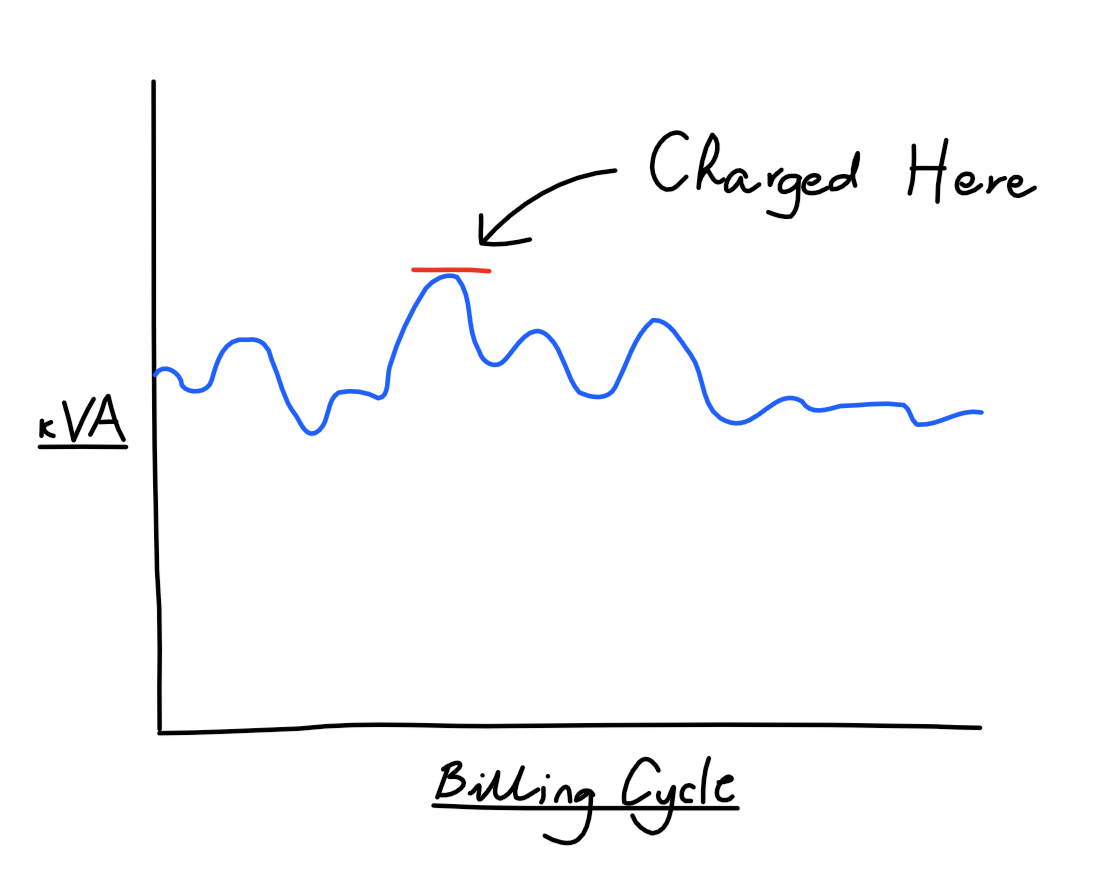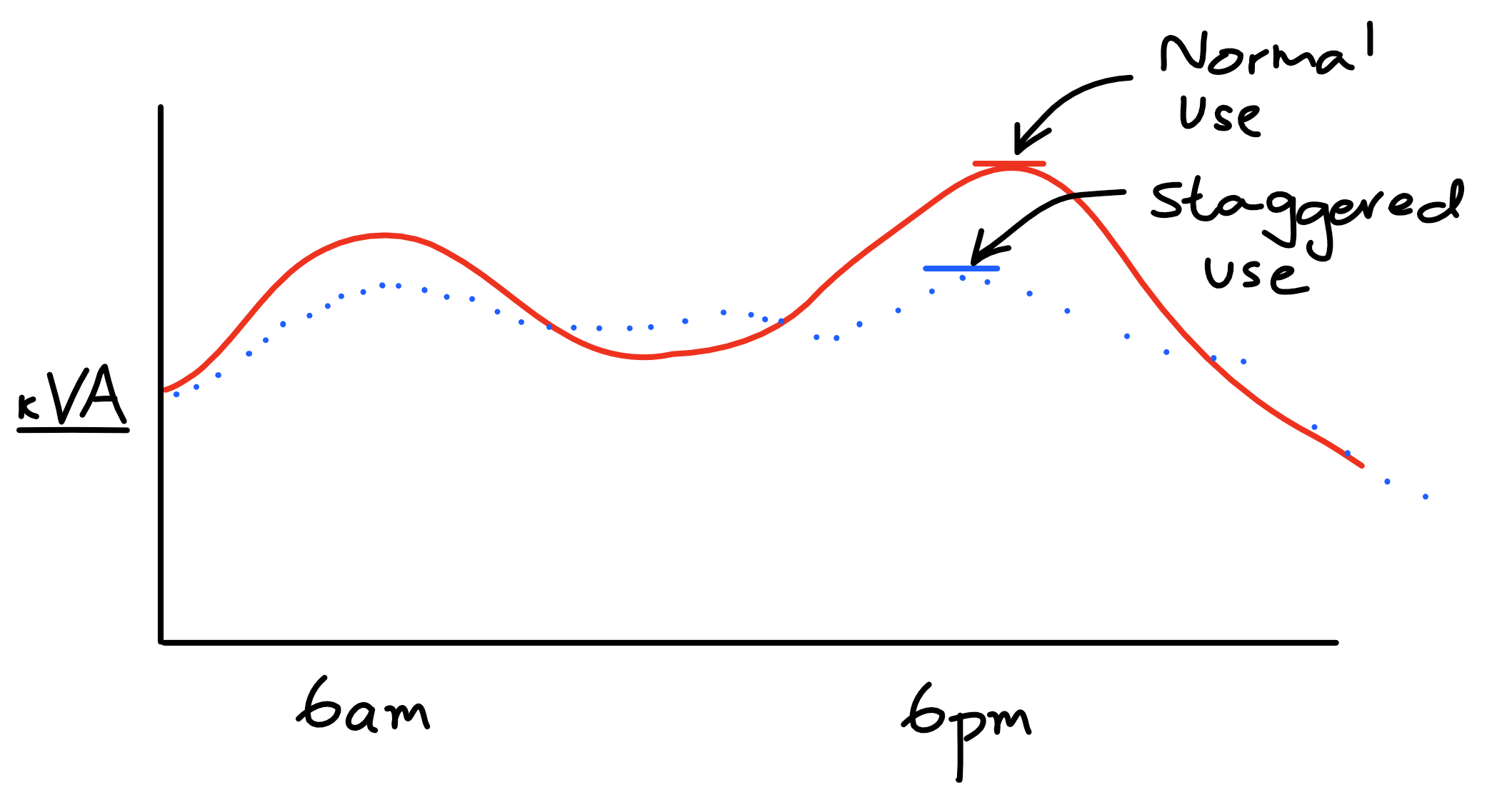If you hear the words ‘Demand Tariffs’ and start scratching your head, don’t worry – you’re not alone. In this article, we’ll examine what demand tariffs are and how to deal with them.
Supply charges, usage charges and – now – demand charges?
Normally, there are two components to an energy bill:
- fixed ‘supply’ charges (usually between $0.50 – $1.50/day), and
- variable ‘usage’ or ‘consumption’ charges- these can be either ‘flat’ (always the same), ‘block’ (changing depending on how many units you consume), or ‘time of use‘ (higher or lower depending on the time of day).
More recently, however, a third component – a ‘demand tariff’ – is being introduced for residential customers in some places and on some plans. Previously, demand tariffs only applied to commercial entities who use large amounts of energy (usually over 100 megawatt-hours per year). In effect, a demand tariff charges you in accordance with the ‘stress’ that you put on the system by drawing a lot of energy at once.
South Australia and NSW have introduced demand tariffs for residential consumers, but whether or not they apply to your home will depend on your electricity retailer and the plan that you’re on.
Compare solar & battery storage quotes from installers in your area!
Under a demand tariff, you are charged for:
The highest amount of energy demand your home consumes from the grid over a set period of time. This is usually expressed in terms of kilowatts (kW – sometimes expressed as kVA), with 1kW being equal to 1,000 watts (W). If you’re running a vacuum cleaner that uses 1,200W at the same time as a washing machine that is using 300W, altogether your demand will be 1,500W – or 1.5kW.
You could be charged a demand tariff on a daily basis (for days when you exceed the prescribed demand threshold), or there might be a single threshold for the whole billing period (e.g. if you exceed it only once during the 3 months leading up to your bill, the charge will still apply to you).
The price you pay for energy is, in this case, mostly influenced by the highest demand (kW) of energy you use at a particular point in time.
But what does demand mean?
Demand is the rate of energy being used and is measured in kW – in the same way that the speed of a car is a rate not the actual amount of distance traveled. If you turn on energy-hungry appliances, the demand is high at that point in time, leading to a demand spike (see image below).
With demand tariffs, you don’t just get charged for the electricity you use, you also get a capacity charge, based on the peak amount of power you draw from the grid.
To tackle this, you have to be aware of how much energy your household uses and when. Knowing when your peak hours are and what appliances are on is key. This enables you to stagger out the appliances so they are not all competing for electricity at the same time (see image).
How to tackle demand tariffs
Solar power and battery storage are two ways that households can keep their grid energy draw to a minimum. But as the saying goes, ‘you can’t manage what you don’t measure’, and to truly maximise the benefits of these two technology options, a household will need to both monitor and control their demand levels. Energy management systems (like carbonTRACK) are an obvious option to achieve this goal, and they are becoming increasingly popular and affordable in Australia.
In a best case scenario, a good energy management system will:
- ‘Know’ what the kW threshold is under your demand tariff arrangement
- Stagger appliance usage as much as possible throughout the day to avoid breaching this threshold
- Run appliances together only when there’s sufficient solar energy available to keep grid draw below the threshold
- When available, discharge stored battery energy to prevent demand from exceeding the threshold
This a different version of this article originally appeared on the carbonTRACK blog.
Compare solar & battery storage quotes for your area
- A guide to community microgrids - 11 July, 2017
- Electricity demand tariffs in Australia – How to handle them - 3 March, 2017

